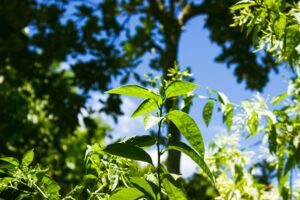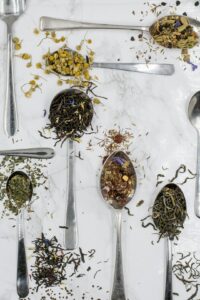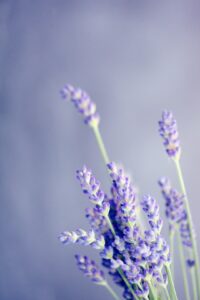Support our educational content for free when you purchase through links on our site. Learn more
How Do You Make Tea with Homegrown Herbs? [2023]
Are you a tea lover who also enjoys gardening? If so, why not combine your passions and make tea with homegrown herbs? Not only will you have the satisfaction of growing your own ingredients, but you’ll also be able to enjoy the freshest and most flavorful tea possible. In this article, our team at Growing Teas™ will guide you through the process of making tea with homegrown herbs, providing expert advice and tips along the way. So grab your gardening gloves and let’s get started!
Table of Contents
- Quick Answer
- Quick Tips and Facts
- What are Herbal Teas?
- List of Herbs for Tea
- Step-by-Step Guide
- Tips for Making Tea with Homegrown Herbs
- How to Dry Fresh Herbs
- Equipment for Making Tea
- Related Recipes
- FAQ
- Conclusion
- Recommended Links
- Reference Links
Quick Answer
To make tea with homegrown herbs, follow these steps:
- Harvest fresh herbs from your garden.
- Rinse the herbs to remove any dirt or debris.
- Choose your desired herbs and combine them in a teapot or infuser.
- Boil water and pour it over the herbs.
- Let the herbs steep for a few minutes.
- Strain the tea and enjoy!
Pro Tip: Experiment with different herb combinations to create unique and flavorful tea blends.
Quick Tips and Facts
- Herbal teas, also known as tisanes, are made from various parts of plants such as flowers, seeds, leaves, stems, and roots.
- Homegrown herbs offer superior flavor and freshness compared to store-bought herbs.
- Some popular herbs for tea include mint, chamomile, lavender, and lemon balm.
- Herbal teas can be enjoyed hot or cold, depending on your preference.
- Adding a natural sweetener like honey or stevia can enhance the flavor of your herbal tea.
Now that you have a quick overview, let’s dive deeper into the world of herbal teas and learn how to make them with your own homegrown herbs.
What are Herbal Teas?
Herbal teas, also known as tisanes, are beverages made by infusing various parts of plants in hot water. Unlike true teas, which are derived from the Camellia sinensis plant, herbal teas are caffeine-free and offer a wide range of flavors and health benefits. They have been enjoyed for centuries for their soothing and therapeutic properties.
Pro Tip: Herbal teas can be customized to suit your taste preferences and health needs. Experiment with different herbs to find your perfect blend.
List of Herbs for Tea
When it comes to making tea with homegrown herbs, the possibilities are endless. Here are some popular herbs that you can grow in your garden and use to make delicious herbal teas:
| Herb | Flavor | Aroma | Health Benefits |
|---|---|---|---|
| Mint | Refreshing and cooling | Minty | Aids digestion and relieves headaches |
| Chamomile | Mild and floral | Apple-like | Promotes relaxation and sleep |
| Lavender | Floral and slightly sweet | Floral | Reduces anxiety and improves sleep |
| Lemon Balm | Citrusy and refreshing | Lemon-like | Calms the mind and eases stress |
| Rosemary | Earthy and aromatic | Woody | Boosts memory and improves digestion |
| Thyme | Savory and herbal | Herbal | Supports respiratory health and boosts immunity |
Pro Tip: Feel free to mix and match herbs to create your own unique tea blends. Get creative and have fun experimenting with different flavors!
Step-by-Step Guide
Now that you have a list of herbs to choose from, let’s walk through the step-by-step process of making tea with homegrown herbs:
-
Harvest the herbs: Carefully cut or pluck fresh herbs from your garden. Choose the healthiest leaves and stems for the best flavor.
-
Rinse the herbs: Gently rinse the herbs under cool water to remove any dirt or debris. Pat them dry with a clean towel.
-
Choose your herbs: Select the herbs you want to use for your tea. You can use a single herb or create a blend of multiple herbs for a more complex flavor profile.
-
Prepare the teapot or infuser: Place the herbs in a teapot or infuser. Use approximately 1 tablespoon of fresh herbs per cup of water.
-
Boil water: Bring water to a boil in a kettle or pot. Use filtered water for the best taste.
-
Pour water over the herbs: Pour the boiling water over the herbs in the teapot or infuser. Cover and let it steep for 5-10 minutes, depending on the desired strength.
-
Strain and serve: After steeping, strain the tea to remove the herbs. Pour the tea into cups or mugs and enjoy!
Pro Tip: Adjust the steeping time to suit your taste. Longer steeping times will result in a stronger flavor.
Tips for Making Tea with Homegrown Herbs
-
Experiment with herb combinations: Mix and match different herbs to create unique flavor profiles. Try combining mint and chamomile for a soothing blend or lavender and lemon balm for a calming tea.
-
Add natural sweeteners: Enhance the flavor of your herbal tea by adding natural sweeteners like honey, stevia, or agave syrup. Adjust the amount to suit your taste.
-
Pair herbs with other ingredients: Enhance the flavor of your herbal tea by pairing herbs with complementary ingredients. For example, add a slice of lemon or a piece of ginger to your tea for an extra kick of flavor.
-
Use fresh herbs: The fresher the herbs, the better the flavor. Harvest your herbs just before brewing to ensure maximum freshness.
-
Grow your own herbs: Consider growing your own herbs to have a constant supply of fresh ingredients for your tea. It’s a rewarding and cost-effective way to enjoy homegrown herbal teas.
How to Dry Fresh Herbs
Drying fresh herbs is a great way to preserve them for future use. Here’s a simple method for drying herbs:
-
Harvest the herbs: Cut or pluck fresh herbs from your garden, choosing healthy leaves and stems.
-
Bundle the herbs: Tie the stems of the herbs together with a string or rubber band. Make sure the bundle is secure.
-
Hang the herbs: Hang the herb bundle upside down in a cool, dry place with good air circulation. This will allow the herbs to dry naturally.
-
Wait for the herbs to dry: Depending on the herb and the conditions, drying can take anywhere from a few days to a few weeks. The herbs are ready when they are dry and crumbly to the touch.
-
Store the dried herbs: Once the herbs are dry, remove the leaves from the stems and store them in an airtight container. Keep the container in a cool, dark place to maintain the herbs’ flavor and potency.
Pro Tip: Dried herbs can be used to make tea or added to culinary dishes for extra flavor.
Equipment for Making Tea
To make tea with homegrown herbs, you’ll need a few basic pieces of equipment:
-
Teapot or infuser: Choose a teapot or infuser that suits your needs and personal style. Look for one that is easy to clean and has a fine mesh to prevent herb particles from escaping into your tea.
-
Kettle or pot: Use a kettle or pot to boil water for your tea. Opt for one with a spout for easy pouring.
-
Spoon: A spoon is handy for measuring and stirring your tea.
-
Tea cup or mug: Select a tea cup or mug that is large enough to hold your desired amount of tea. Choose one that is comfortable to hold and has a handle to prevent burns.
Pro Tip: Invest in high-quality equipment that will last for years to come. It will enhance your tea-making experience and ensure the best results.
Related Recipes
Looking to expand your tea repertoire? Here are a few related recipes to try:
-
Mint-Lemon Iced Tea: Brew a strong batch of mint tea, let it cool, and add freshly squeezed lemon juice and ice for a refreshing summer drink.
-
Chamomile-Lavender Latte: Steep chamomile and lavender in hot milk, sweeten with honey, and top with frothed milk for a soothing and aromatic latte.
-
Rosemary-Orange Infusion: Combine rosemary leaves and orange slices in a pitcher of water. Let it infuse in the refrigerator overnight for a flavorful and hydrating drink.
Pro Tip: Get creative and experiment with different flavors and ingredients to create your own signature tea recipes.
FAQ
How to make tea with your own herbs?
To make tea with your own herbs, follow these steps:
- Harvest fresh herbs from your garden.
- Rinse the herbs to remove any dirt or debris.
- Choose your desired herbs and combine them in a teapot or infuser.
- Boil water and pour it over the herbs.
- Let the herbs steep for a few minutes.
- Strain the tea and enjoy!
Read more about “… How to Grow Your Own Herbal Tea: A Comprehensive Guide”
Do you have to dry herbs before using them for tea?
Drying herbs is not necessary for making tea. You can use fresh herbs directly from your garden. However, if you want to preserve your herbs for future use, drying them is a great option.
Read more about “… Herbal Tea Plants: A Comprehensive Guide to Growing Your Own Tea Garden”
How long to boil fresh herbs for tea?
Boiling fresh herbs for tea is not recommended, as it can result in a bitter taste. Instead, pour boiling water over the herbs and let them steep for a few minutes to extract their flavors.
Read more about “… Fresh Herbs for Tea: A Comprehensive Guide to Growing and Brewing”
Can you make tea from any herb?
While many herbs can be used to make tea, not all herbs are suitable for consumption. Some herbs may be toxic or have adverse effects on certain individuals. It’s important to research the herbs you plan to use and ensure they are safe for consumption.
Pro Tip: Consult a reputable source or herbalist to learn more about the safety and potential health benefits of different herbs.
Conclusion
Making tea with homegrown herbs is a delightful way to enjoy the flavors and benefits of fresh ingredients. By following our step-by-step guide and incorporating our expert tips, you’ll be able to create delicious and personalized herbal teas right in your own kitchen. So, roll up your sleeves, tend to your herb garden, and savor the satisfaction of brewing a cup of tea made with love and homegrown goodness.
Recommended Links
- How to Grow Your Own Herbal Tea: A Comprehensive Guide
- Green Tea Cultivation
- Herbal Tea Planting
- Tea Plant Varieties
- Soil and Climate for Tea
Reference Links
- Fresh Herbal Tea (12 Herbs + How to Guide) – Plant Based Folk
- Natasha Zervaas – Naturopath and Stress Specialist
Remember, the joy of making tea with homegrown herbs goes beyond the final cup. It’s about the connection to nature, the satisfaction of nurturing your own plants, and the pleasure of savoring a beverage that you’ve crafted with care. So, embrace your inner tea grower and embark on this delightful journey of growing and brewing your own herbal teas. Cheers to a cup of tea that’s truly homegrown!








